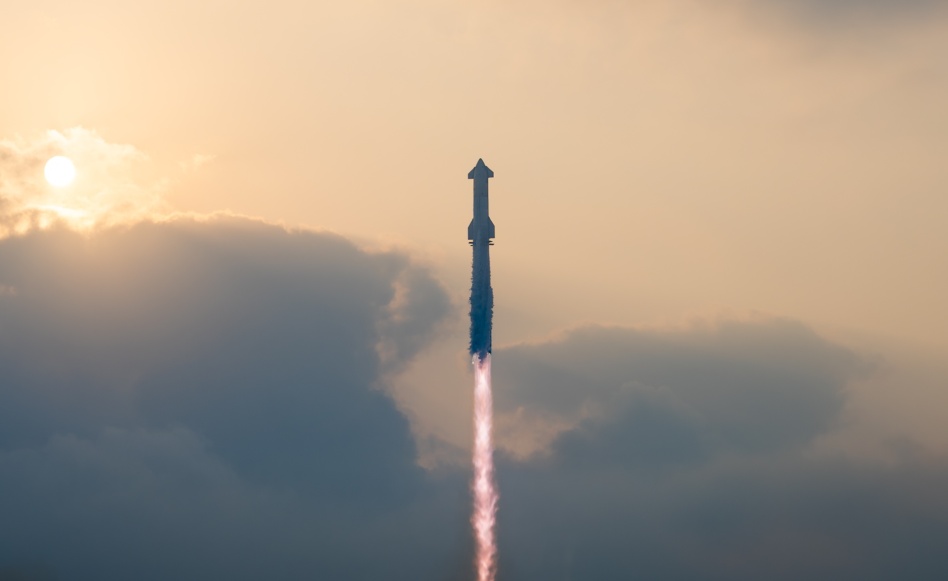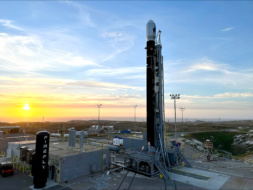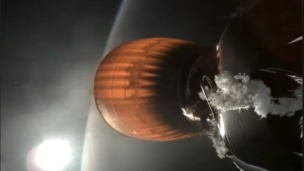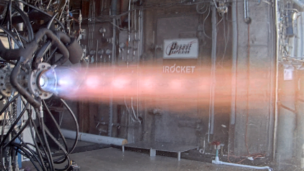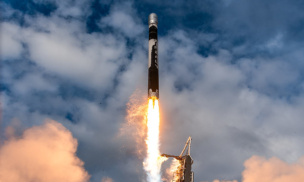While rocket launches are usually all about what goes up, the most impressive feat during Starship’s fourth test flight Thursday morning happened on the way down, when the Super Heavy booster and Starship notched graceful water landings for the first time.
The successful journey from Starbase to the Indian Ocean brought SpaceX many steps closer to its goal of reliable Starship flights with reusable hardware. Starlink, for its part, held the connection from onboard cameras with minimal interruptions—offering the millions who tuned in unprecedented up-close views of the rocket’s plasma-filled descent to Earth and allowing the boisterous crowd of SpaceX employees outside mission control in Hawthorne, CA, to cheer on each stage of the one-hour and six-minute flight.
Passing the test: Starship left the launchpad in Boca Chica, TX at 8:50am ET. The flight didn’t deliver anything to space; instead, engineers on a broadcast repeatedly said that “the payload for this test was the data.”
Super Heavy:
- Engines: 32 of 33 Raptor booster engines fired during launch and powered the full duration of Starship’s initial ascent, a minor decrease from all 33 firing in IFT-3.
- Hot staging: Separation went smoothly, as Starship jettisoned the booster and the hot stage structure without incident.
- Splashdown: The Super Heavy Booster performed its flip maneuver, boostback burn, and landing burn for a successful soft splashdown in the Gulf of Mexico.
Starship’s Flight:
- Cruising altitude: All six of Starship’s second stage Raptor engines fired to bring the spacecraft to its planned coasting trajectory.
- Reentry: Starship reentered the atmosphere with far more stability than IFT-3, and all flaps were able to control the ship’s altitude through its high-pressure descent.
- Heat shield and flaps: Many of the heat shield’s ceramic panels flew off during reentry, and one flap was damaged considerably, holding on by a hair. Even still, the spacecraft held steady through the peak heating and maximum pressure phases of reentry.
- Soft landing: Starship ignited all three of its center Raptor engines, performing the first successful flip maneuver and landing burn, splashing down in the Indian Ocean as planned.
What’s next: The overwhelming success of Thursday’s flight means there’s unlikely to be any FAA investigation, so we could see another Starship flight relatively soon. In IFT-5, SpaceX engineers are expected to run further tests of the heat shield technology and may even attempt to catch the Heavy Booster with the Mechazilla “chopstick” arms back on the launch pad.
